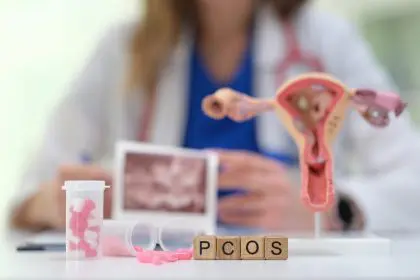New research has revealed a troubling connection between those seemingly innocent sweet beverages and a serious health consequence many wouldn’t expect. The consumption of sugar-sweetened drinks has now been linked to a dramatically increased risk of oral cavity cancer, particularly among women, according to findings that may change how many view their favorite sodas and energy drinks.
The surprising numbers behind the research
The extensive study tracked over 162,000 women, identifying 124 cases of oral cavity cancer during the research period. The results painted a concerning picture: women who consumed just one sugary beverage per week faced nearly 5 times higher risk of developing oral cavity cancer compared to those who limited their intake to less than one per month.
This risk ratio of 4.87 times higher likelihood remained consistent even when researchers accounted for other traditional risk factors. Women who neither smoked nor drank alcohol heavily still showed the elevated risk when regularly consuming sugar-sweetened beverages, challenging conventional understanding of oral cancer development.
What exactly is oral cavity cancer?
Oral cavity cancer encompasses several types of cancers that develop in different parts of the mouth. These include cancers affecting:
- The tongue, particularly the sides and base
- The gums and underlying bone
- The inside lining of the cheeks
- The floor of the mouth beneath the tongue
- The hard palate (roof of the mouth)
- The small area behind the wisdom teeth
- The lips and the area where lips meet the gums
Historically, these cancers have been most common among men with significant tobacco or alcohol use histories. However, medical professionals have noticed a shifting demographic pattern with increasing cases among non-smoking women, spurring interest in dietary factors that might contribute to this change.
How sugar might transform into cancer
The research points to several biological mechanisms that might explain how sugary drinks contribute to cancer development. When consumed frequently, these beverages may trigger multiple harmful processes in the mouth:
First, high sugar intake promotes chronic inflammation throughout the body, including in oral tissues. This persistent inflammatory state creates an environment where cellular damage accumulates and the risk of cancerous transformations increases over time.
Second, the oral microbiome—the complex ecosystem of bacteria living in the mouth—undergoes significant changes with frequent sugar exposure. Regular consumption of sweetened beverages can allow harmful bacteria to flourish while reducing beneficial bacterial populations. This imbalance may create conditions favorable for cancer development.
Third, the combination of sugar and acidity in many sweetened beverages directly damages the mucous membranes lining the mouth. Over years of exposure, this repeated injury and repair cycle can lead to DNA damage in cells, potentially resulting in cancer-causing mutations.
Fourth, excessive sugar consumption affects whole-body metabolism, potentially leading to insulin resistance. This metabolic condition triggers increased production of growth factors that can accelerate cancer cell development and proliferation.
Beyond cancer: The wider impact on health
The potential cancer link represents just one aspect of how sugary drinks affect health. Regular consumption of these beverages has been associated with a cascade of oral and systemic health issues:
Dental health suffers significantly, with tooth decay and cavity formation accelerated by the combination of sugar and acid. The bacteria that cause tooth decay thrive in the sugar-rich environment, producing acids that erode tooth enamel and create cavities.
Gum disease risk increases substantially with regular sugary drink consumption. The inflammatory response triggered by sugar creates an environment where periodontal disease can develop and progress more rapidly, potentially leading to tooth loss over time.
Diabetes risk climbs with each additional serving of sugar-sweetened beverages. The massive sugar load in these drinks challenges the body’s insulin response, potentially leading to insulin resistance and eventually type 2 diabetes in susceptible individuals.
Cardiovascular health deteriorates with regular consumption, as the metabolic effects of excess sugar contribute to inflammation of blood vessels, altered cholesterol profiles, and increased blood pressure—all key risk factors for heart disease.
Weight management becomes increasingly difficult, as liquid sugar calories don’t trigger the same fullness signals as solid food, making it easier to consume excess calories without compensation elsewhere in the diet.
The changing face of oral cancer
The demographic patterns of oral cancer have shifted substantially in recent decades. While historically most common among older men with significant tobacco use, medical professionals now report increasing cases among younger individuals and women without traditional risk factors.
This demographic shift coincides with changing consumption patterns of sugary beverages. As consumption of these drinks increased dramatically since the 1970s, particularly among younger populations, the cancer incidence has shown troubling changes as well.
The typical oral cancer patient profile continues to evolve, with more cases appearing in individuals without exposure to alcohol and tobacco—the factors previously thought to account for the vast majority of risk. This changing pattern suggests environmental or dietary factors like sugary drink consumption may play a more significant role than previously recognized.
Finding balance in daily choices
While the research results appear alarming, health experts emphasize that occasional consumption of sugar-sweetened beverages likely carries minimal risk. The study focused on regular, habitual consumption patterns rather than occasional indulgence.
For those concerned about their risk profile, several practical approaches can help reduce potential harm:
Water remains the ideal beverage choice for daily hydration needs. Unsweetened tea or coffee can provide flavorful alternatives without the risks associated with added sugars.
Fruit-infused water offers flavor without added sugars. Adding slices of citrus, berries, or cucumber to water can make hydration more enjoyable while avoiding sweetened options.
Gradual reduction allows taste preferences to adjust. Those accustomed to sweet beverages can slowly reduce their consumption while allowing their palate to adapt to less sweetened options.
Reading labels reveals hidden sugars in many beverages marketed as healthy. Even sports drinks, vitamin waters, and some fruit juices contain significant added sugars that contribute to overall intake.
Tracking consumption often reveals surprising patterns. Many people underestimate their sugary drink intake until they deliberately monitor their consumption over several weeks.
The importance of early detection
Beyond prevention through dietary choices, early detection remains crucial for successful treatment of oral cavity cancers. Regular dental examinations provide opportunities for professionals to identify suspicious changes in oral tissues before they develop into advanced cancer.
Self-examination also plays an important role in early detection. Looking for persistent changes in the mouth, including:
- Red or white patches that don’t resolve within two weeks
- Unexplained bleeding from the gums or other oral tissues
- Persistent sores or ulcers that don’t heal
- Lumps, thickening, or rough spots in the mouth
- Chronic sore throat or feeling that something is caught in the throat
- Difficulty chewing, swallowing, or moving the jaw or tongue
- Numbness in any part of the mouth
Any of these symptoms persisting for more than two weeks warrants professional evaluation. When detected early, oral cavity cancers generally respond well to treatment, with significantly better survival rates than cases diagnosed at advanced stages.
A balanced perspective on risk
While the research highlights an important potential risk factor, keeping perspective on overall cancer risk remains important. Multiple factors contribute to cancer development, including genetic predisposition, environmental exposures, and various lifestyle factors beyond diet.
The research demonstrates correlation rather than definitive causation, meaning more studies will be needed to fully understand the relationship between sugary drinks and oral cancer. However, given the numerous other health concerns associated with sugar-sweetened beverages, reducing consumption offers benefits regardless of the cancer connection.
For those with additional risk factors—such as tobacco use, heavy alcohol consumption, or family history of oral cancers—limiting sugary drink intake represents a simple step toward reducing overall risk. Combined with regular dental care and awareness of oral changes, this dietary modification forms part of a comprehensive approach to oral health.















